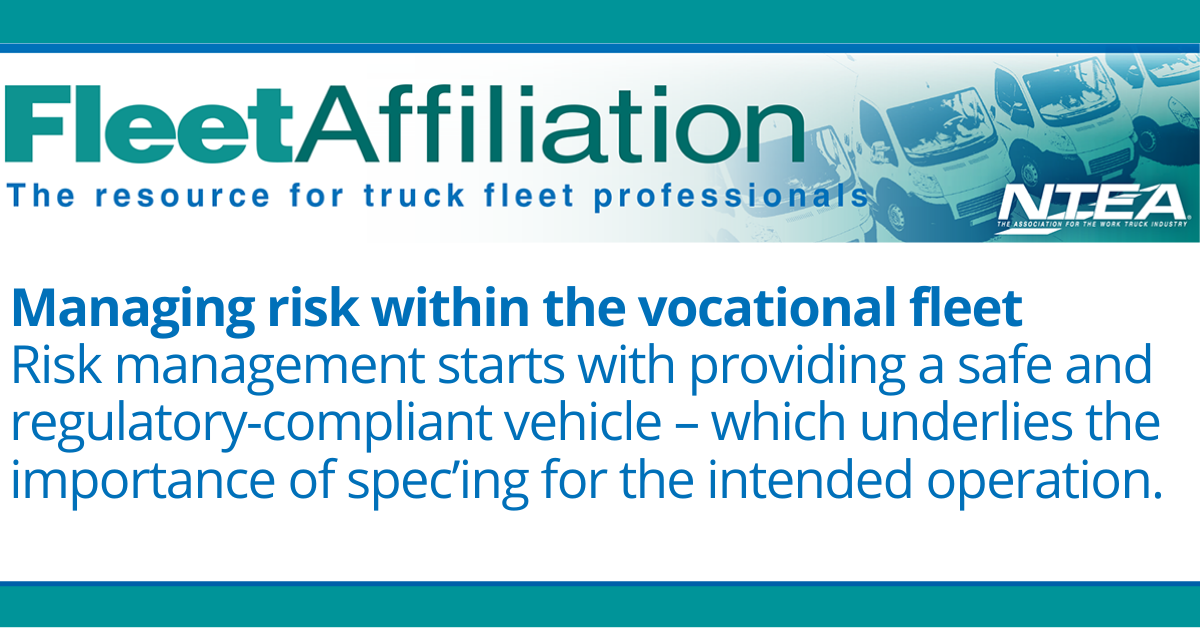
Published in March 2023 Fleet Affiliation.
Risk management is an important aspect of organizations within the commercial fleet space. Maintenance, safety inspections and obtaining proper licensing are just the tip of the iceberg. Fleet professionals must also oversee shop safety, regulatory and environmental compliance, and more.
Risk management starts with providing a safe and regulatory-compliant vehicle – which underlies the importance of spec’ing for the intended operation. No matter how carefully maintained a vehicle may be, if it’s not used for its intended purpose, or if it’s improperly designed, then the organization’s risk exposure is increased. This is why it’s critical for the vehicle designer or purchaser to understand and communicate throughout the entirety of the vehicle design process to vehicle operation.
Organizations often rely on third parties such as fleet management companies, chassis dealers and upfitters to design their commercial vehicles. These third parties also require the same level of familiarity with the organization's operations. This is key to the successful design of a safe vehicle.
While third-party designers are responsible for designing regulatory-compliant vehicles that meet safety regulations, they can only design based on the information and applications provided to them. In the end, it’s the organization's responsibility to determine if a vehicle is suitable to the task, regardless of who writes the specifications.
Proper commercial vehicle basics
Four key basic elements for proper commercial vehicles:
- Chassis
- Upfitting components
- Securement
- Safety
Before any of these can be addressed, the vehicle’s specific intended purpose must first be defined. This cannot be overstated. While there are steps to design safeguards, operators have the ultimate responsibility to understand the intended purpose and operate the vehicle accordingly.
- Chassis selection. Weight rating should be at the top of the list. Overloaded vehicles significantly impact an origination’s risk. Beyond gross vehicle weight rating (GVWR), individual components must be considered. This includes tires, springs, axles, frames, and many others.
- Components selection. Upfitting components are permanently added to the chassis. This includes cranes, liftgates, snowplows, and more. These must be installed in compliance with the component manufacturer and matched properly to the chassis.
- Securement considerations. If the vehicle will be used to transport cargo, then storage and securement needs must be considered. Needs will vary depending on the type of anticipated cargo – specialized tools or equipment, etc.
- Safety. We have previously and often stressed the importance of designing a safe commercial vehicle. It’s important to ensure operators will not be placed in hazardous positions during normal and intended vehicle operation. As a start, ensure elements such as pinch points, visibility and accessibility are reviewed from a safety standpoint. A foundational understanding of safe commercial vehicles and operations is key to fleet risk management.
